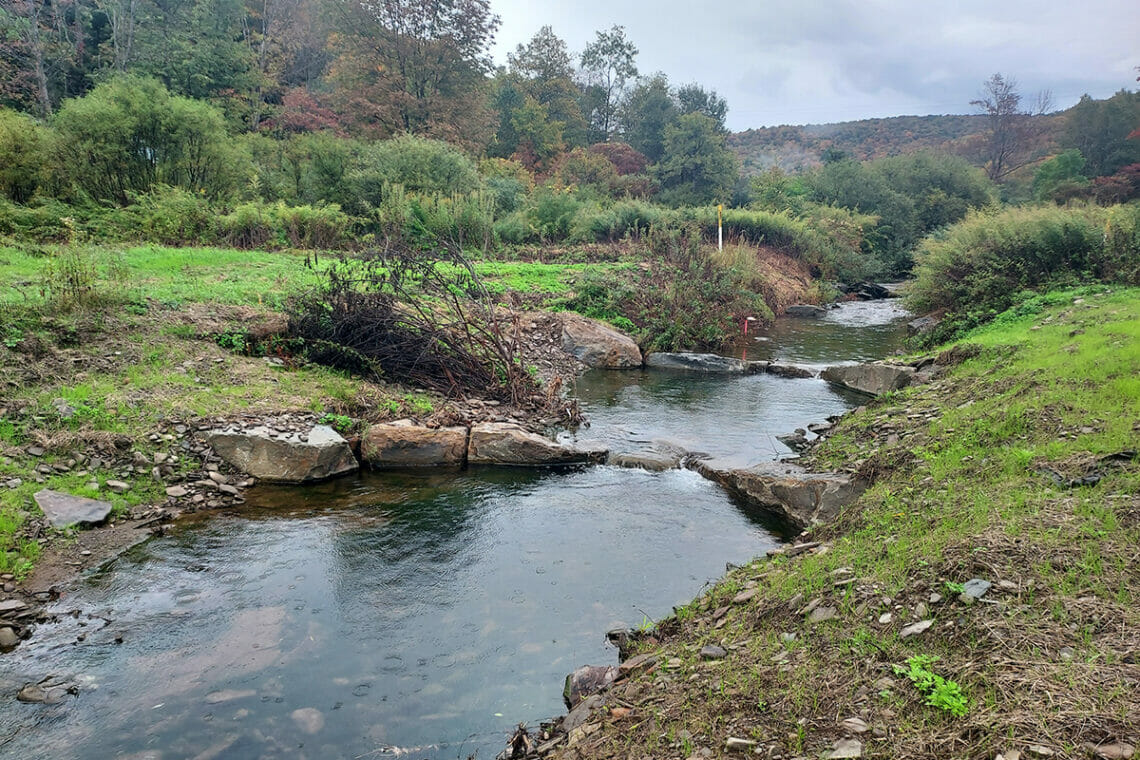The West Branch Delaware River is one of the East’s most popular wild trout fisheries. (Derek Eberly)
Upper Delaware River

Overview
On the Upper Delaware River, Trout Unlimited is working to protect and recover native brook trout populations and enhance a world-class tailwater fishery for wild brown and rainbow trout. Working with partners like the state Department of Environmental Conservation, TU’s state council in New York, and Friends of the Upper Delaware River, we are engaging the community, advocating for the river, bringing conservation dollars to the region, and restoring tributaries. We are assessing and replacing failing road stream crossings that block fish passage and present community flood risks. The Willowemoc watershed is a priority for recovering a native fishery on once legendary wild brook trout waters that are currently stocked with browns by the state.
Willowemoc Creek: Eastern Brook Trout Recovery

These sprawling roots from local hardwood deadfall anchor a previously eroded stream bank. (Trout Unlimited)
On the Willowemoc and the Little Beaverkill, two Upper Delaware tributaries, field crews are doing a soup-to-nuts assessment—electrofishing streams to calculate trout biomass, installing temperature monitors, sampling macroinvertebrates, and assessing fish passage at culverts. The data will help build a roadmap toward the larger goal: reverting to a native fishery on once legendary wild brook trout waters that are now heavily stocked with browns by the state.
West Branch and East Branch: Reconnecting Fragmented Habitat
On small tributaries across the watershed, we are removing failing culverts, shoring up stream banks with logs and root wads, reconnecting waters to their floodplains, and replanting streamside trees and vegetation. Restoring a functioning ecosystem makes for healthier, cleaner water for wild and native trout and for rural communities. Funding from the federal Delaware Watershed Conservation Fund and the Bipartisan Infrastructure Law help support this work.
Upper Delaware River: Tailwater Advocacy

Watching for rises on the Upper Delaware. (Derek Eberly)
Operation of the New York City water supply reservoirs on the West Branch and East Branch of the Delaware can wreak havoc on the fishery. Low water releases lead to high water temperatures and, on occasion, exposed streambeds as the city protects its water supply. Erratic releases raise and lower flows disruptively. Following years of research, advocacy, and negotiation led by TU, The Nature Conservancy, FUDR, and local anglers, habitat protection measures were incorporated into the reservoir release regimes in 2007, but the push for higher and more consistent releases continues to this day.






